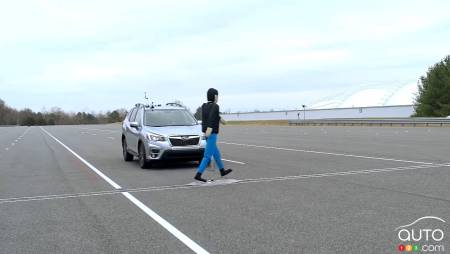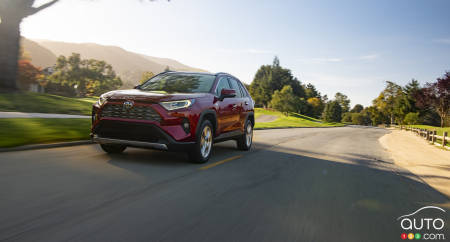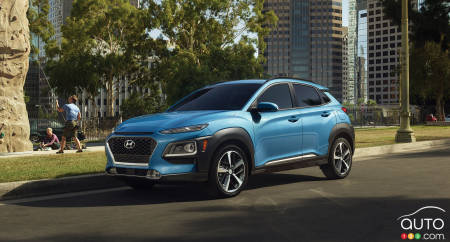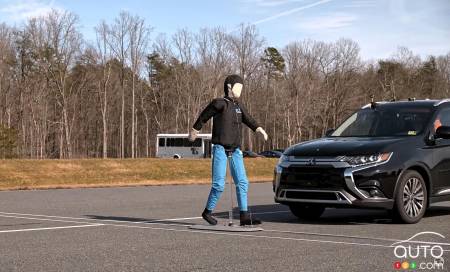Every year, in all parts of the world, pedestrians are victims of collisions involving motor vehicles - and in many regions, the numbers of fatalities are increasing. In the United States, for example, the numbers of pedestrians killed after being hit by a vehicle has increased by 50% in the past decade. In 2017 alone, 6,000 people there lost their lives in such circumstances.
Some point the finger for the escalating figures at SUVs, as their larger dimensions make them more apt to cause severa damage. Smartphone use can certainly be blamed as well, but there’s no denying that the bigger, higher-sitting front end of an SUV or truck is more of a danger to pedestrians than the front of an average car.
The Insurance Institute for Highway Safety (IIHS) created a new crash avoidance test to evaluate the performance of 11 SUVs equipped with pedestrian crash avoidance systems. The aim of course was to see how each vehicle behaves in an emergency situation where an impact with a pedestrian is imminent.

The study revealed that there are significant differences in how effective different systems are at avoiding pedestrians. Of the 11 vehicles tested, two in fact performed poorly and failed to get a passing grade from the IIHS.
The process consisted of three distinct tests that evaluated performance in the following categories:
• An adult walking on the right side of the road who steps out into a vehicle’s path;
• An adult walking on the side of the road (left or right) and walking in same direction as the traffic;
• A child who steps out from between two parked vehicles and becomes visible to the driver of an oncoming vehicle at the last second.
“The best possible outcome is to avoid hitting a pedestrian altogether. When a crash is unavoidable, sharply reducing a vehicle’s travel speed would give someone on foot a far greater chance of surviving any injuries in a similar real-world encounter with a passenger vehicle.”
- David Aylor, IIHS manager of Active Safety Testing

Winners and losers
Here is how the 11 tested vehicles performed in the tests. The IIHS came up with four possible ratings: Superior, Advanced, Basic and No Credit.
The best
Four vehicles performed well enough to obtain the best rating of Superior: the Subaru Forester, Toyota RAV4, Honda CR-V and Volvo XC40. Of these, only the first two were able to completely avoid the test dummies during the testing.
.
.jpg?scaledown=450)
The next best
Five models earned an Advanced rating: Chevrolet Equinox, Kia Sportage, Hyundai Kona, Mazda CX-5 and Nissan Rogue.
These nine vehicles showed an ability to either come to a full stop in time or at least greatly reduce their speed in order to minimize the force of the impact with the “pedestrian”.

The not-so-good
The Mitsubishi Outlander obtained a rating of Basic – clearly insufficient, in the view of the IIHS.
And then there was the BMW X1, which was totally unable to come to a stop in time, even sending the test dummy flying into the air with some force.
Conclusion
The 11 tested vehicles represent just a small sample of the hundreds of vehicles currently available on the market. The objective, however, was to evaluate the systems of 10 different manufacturers; each system is found in a large number of vehicles.
It’s a valid question to ask if all vehicles using a particular system perform the same way or not. We don’t really know the answer to that question. Time – and more testing – will tell.
The IIHS test did reveal that, in general terms, the systems do work; that said, the case of the BMW X1 is worrisome. Here’s hoping that the manufacturer tales into consideration the IIHS’ finding and makes the necessary adjustments.
Here’s hoping as well that the IIHS decides to conduct more testing of this type. The safety of pedestrians everywhere could be improved.



